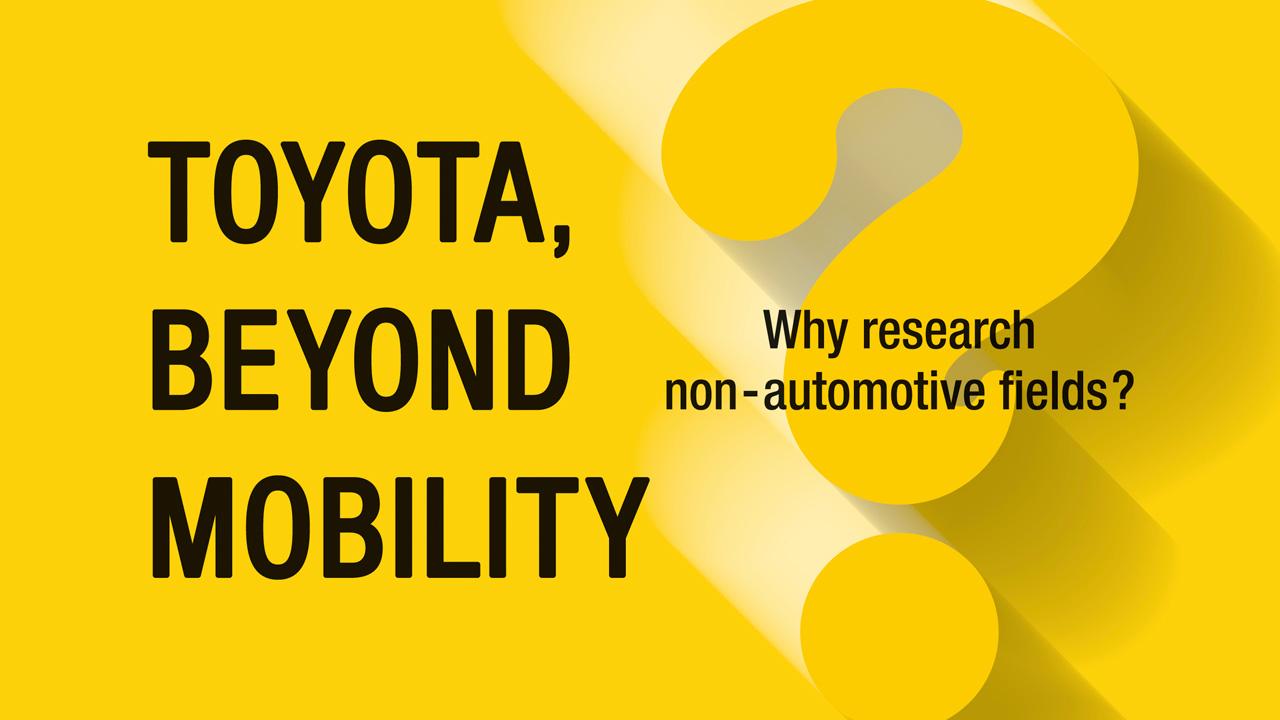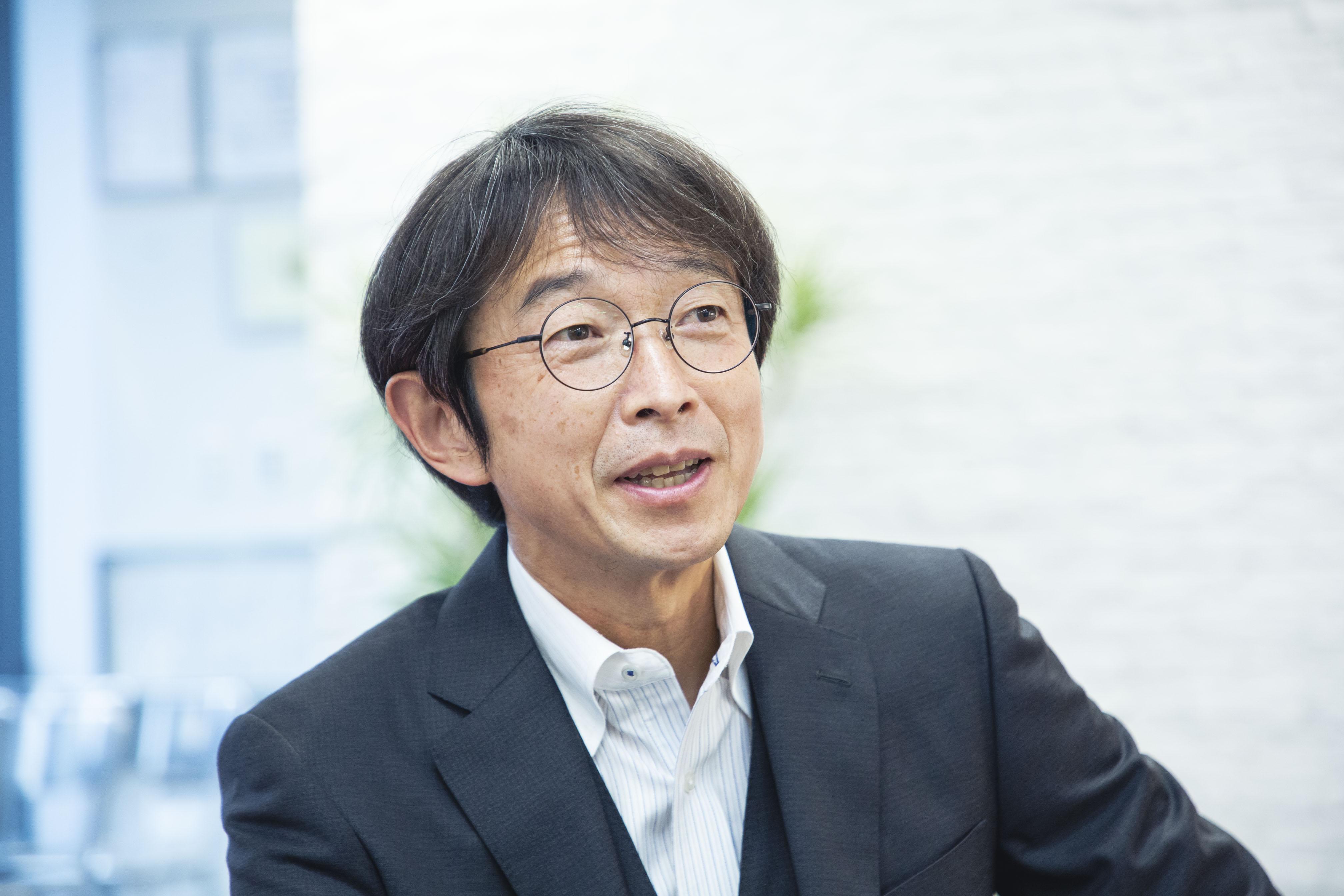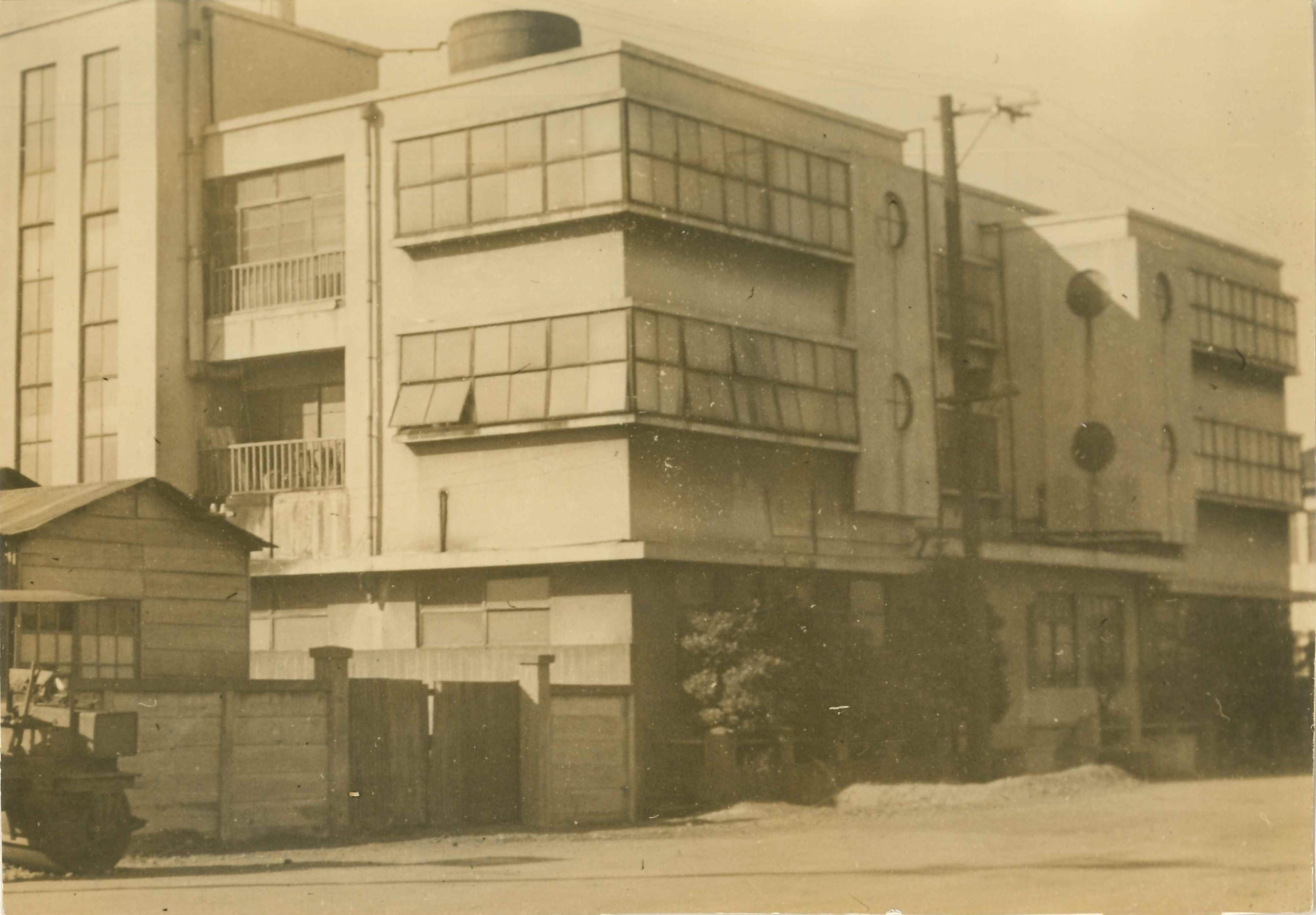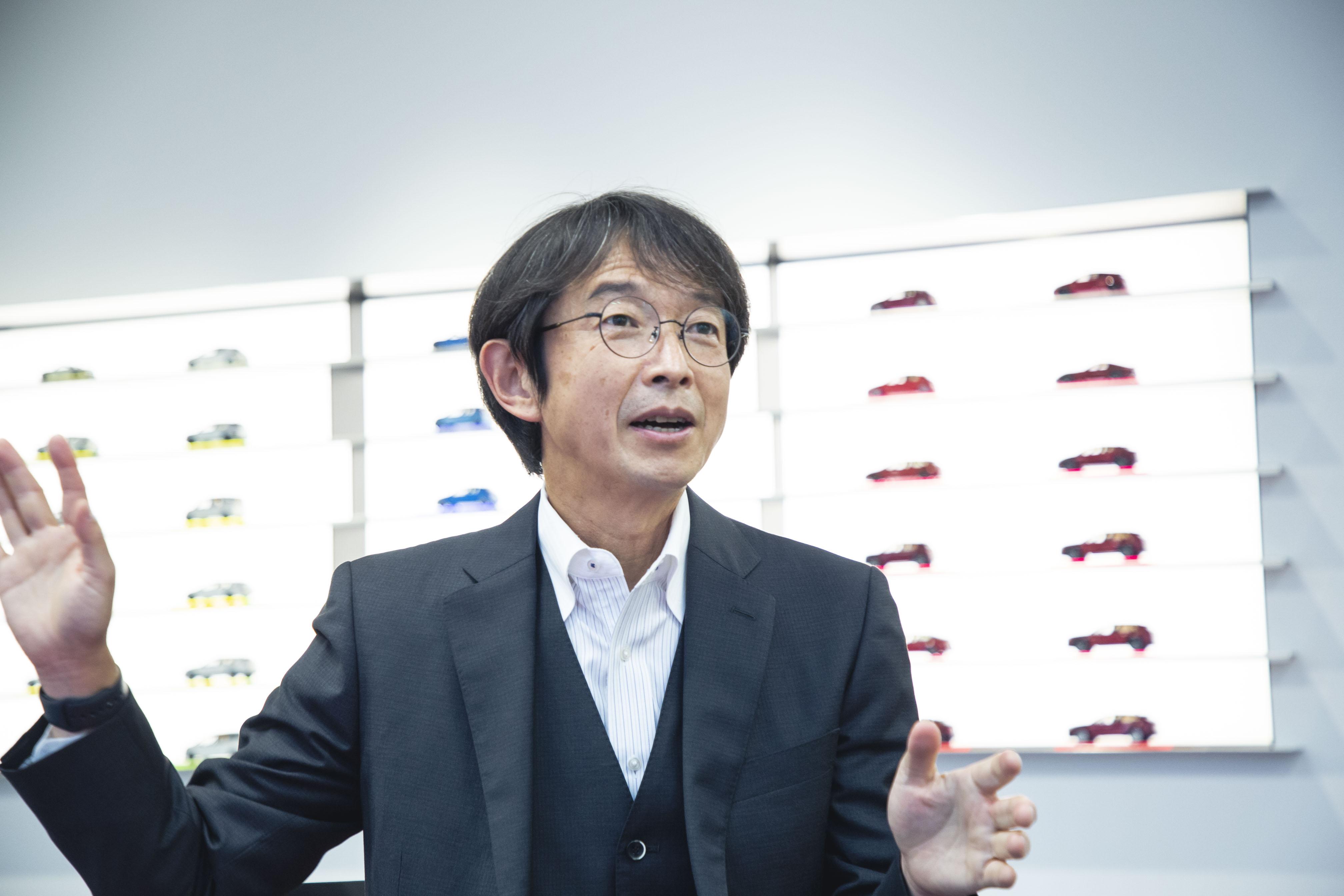
The Frontier Research Center proceeds with projects quite removed from Toyota's main business. Their existence, however, is a significant part of the company's survival strategy.

Nurturing plants in a jungle-like room full of trees, filling a whiteboard with inscrutable formulas, observing red dragonflies, and growing rice crops: the common thread connecting all of these are Toyota employees.
Toyota runs all kinds of projects one would never expect from a company known for making cars. Toyota Times will be spotlighting some lesser-known activities in this Toyota, Beyond Mobility series.
This article introduces the Frontier Research Center through an interview with Nobuhiko Koga, who heads up the group established in 2016. Why does Toyota run a non-automotive research group?
A research center full of surprises

This jungle-like space occupies a room in the Frontier Research Center in Toyota City. Many would be surprised to learn that Toyota has such a facility, or that it’s developing a sharp-shooting basketball robot or kites that generate electricity from westerly winds.
In fact, Toyota established the Frontier Research Center to expand research into future technologies as part of its transformation into a mobility company.
The center’s work consists of four main research fields: Partner Robots, Medical Care, Innovative Infrastructure Technology, and Frontier Research/Co-creation Research. (Visit the website for more information.)
One notable example is the Genki-kûkan™ Research Initiative to study how plants affect the mental and physical conditions of humans. This initiative has gained recognition as a novel perspective on well-being at various academic conferences.
An approachable man in charge
The first surprise from the interview with Koga was how approachable he is inside his room. Everyone in the office can find him in full view and talk to him remotely at any time.
“It’s always like this,” laughs Koga. “I make it so that anyone can see what I’m up to. They can easily spot the best time to talk.”
What’s more, Koga even makes his weekend plans open to all. He connects with staff at a personal level, rather than as the center head, without making any distinction between being on and off duty.

Nicknamed “Nobby,” he promotes barefoot walks as a way of restoring innate human senses. As part of that, he even runs full marathons of 42.195 km shoeless. He also works to create more opportunities for people to experience the world on their own two feet, and has teamed up with friends to start a non-profit focused on maintaining mountain trails.
How does Koga approach his leadership of a group tasked with thinking outside the box for Toyota’s future?
Working on unconventional fields
First, Koga explained why the center pursues research that isn’t part of Toyota’s business agenda.
Koga
Toyota has always embraced the idea of investing in certain fields outside its mainstream product or business plan.
Our founder Kiichiro Toyoda deliberately set up a research facility as a separate division outside the company plant in the earliest days of the automotive business.

I believe that pursuing research off the short-term business agenda is a strategy to hedge risks and survive in a rapidly changing age.
He also emphasizes that the center’s research is not focused on the distant future.
Koga
Let’s say the automotive R&D team works on technology for a five-year period. Even so, we do not think of our role as looking six years ahead. We are ready to put our work to practical use whenever needed.
Our mission is to explore what isn’t covered in our current business strategy. As President Toyoda says, we are in an uncharted era of profound transformation, and I see this as an important survival strategy. Let‘s call it Plan B.
Plan A refers to large-scale R&D investments in our mainstream business. The Frontier Research Center handles Plan B: research that needs doing, even if it’s never actually used. I believe that’s what we are here for.
In fact, some 100 of the center’s talented researchers moved to the Woven Planet Group soon after the Woven City project was revealed in January 2020. It was because the Frontier Research Center had been researching robotics and developing energy to fuel cities even before the Woven City announcement.
Another background of the center’s establishment had to do with a companywide organizational change.
In April 2016, Toyota overhauled its function-based structure, consisting of areas such as body and engine design, to a product-based in-house company system. As a result, the Frontier Research Center was established as a standalone organization.
Koga shared a comical episode recalling how, a year after the center’s establishment, even a former R&D head Takeshi Uchiyamada had little idea what the facility was about. “By the way,” Uchiyamada asked him, “why did we set up the Frontier Research Center?”
Koga
What I find incredible about Toyota is that we had already the given divisions to form a group like this center when restructuring the organization, even without anyone’s clear intent.

Since Toyota’s earliest days, the company has allowed certain members to work on projects that do not require immediate outputs, separate from mainstream business. I believe that is our historical culture. As the company continued to grow through diversity, perhaps this element has remained rooted in the culture until today.
Black Hole Café spurs serendipity
Koga
President Toyoda spoke about the idea that “People gather where joy abounds,” at this year’s entrance ceremony for new employees, and I really like this expression.
We can’t create a fun and interesting department simply by designing an organization. Instead, I believe that interesting people, ideas, and things will gather around you if you are enjoying what you do. That is why I think the leaders of an organization should lead the way in having fun.
People are diverse with different interests. That’s why I value that excitement, that sense of “I don’t know what this is, but it’s interesting.” I try to embrace those feelings, rather than getting fixated on job titles.
Koga draws inspiration from a particular global company to create a place where interesting people come together. That company provides free drinks and snacks at the office to welcome and gather team members even when working from home is a common option. These refreshments are set up within a few meters of each workstation, as laid out in the company’s manual for office design that encourages workers to leave their seats and interact with others.
Koga
For example, if you have different kinds of cereal and herbal tea in a break space, people from various departments—those who don’t have a chance to communicate with each other—will gather there as if drawn by gravity. This is where serendipity is born, creating a source of innovation.
Playing that role in the Frontier Research Center is a coffee room in the middle of the office, dubbed the Black Hole Café.
Fancy name aside, this coffee room is quite different from the café spaces found in modern offices. It is a mysterious room known to few Toyota staff, with the distinctive atmosphere of older buildings.
What sorts of chemistry happens in this Black Hole Café?
Koga
We put out digital scales to accurately weigh beans, an electric mill, and a coffee pot with a thermometer, then everyone started bringing in their favorite coffee beans.
When you brew a great cup of coffee, you want to serve it to someone, which sparks conversation. People began to bring ideas from their various fields, sparking discussions of formulas for expressing things like refreshment or fatigue level. We’re trying to figure out what will gravitate people together.

Finally, Koga shared the following words.
Koga
What’s vital for Toyota is the Plan A people at the very heart of our business. These people sustain our employment, earn the trust of our customers, and are compensated accordingly. I have no intention of saying that Plan B is equally essential.
However, some people might feel uneasy only pursuing Plan A. In light of respecting diversity, I believe that having a space where they can work freely helps expand the sphere of happiness and boost the value created within Toyota.
Koga’s interview shed light on what the Frontier Research Center is up to and Toyota’s efforts in transforming into a mobility company.
Future articles in this series will report specific research projects, starting with Genki-kûkan™. You may find some astonishing new ways plants bring people health and happiness!

Nobuhiko Koga, Frontier Research Center President
Joined Toyota Motor Corporation in 1991 after graduating from the Department of Mechanical Engineering, Faculty of Engineering, Tokyo University of Science. In 2015, completed the University of Tokyo Executive Management Program. Served as an automotive powertrain R&D researcher, European technical regulations liaison manager, automotive powertrain R&D group manager, energy research project leader, and General Manager of the R&D and Engineering Management Div. Has been President and Senior General Manager of the Frontier Research Center since January 2019; since June 2021, also serves as CEO of the Toyota Central R&D Labs.

